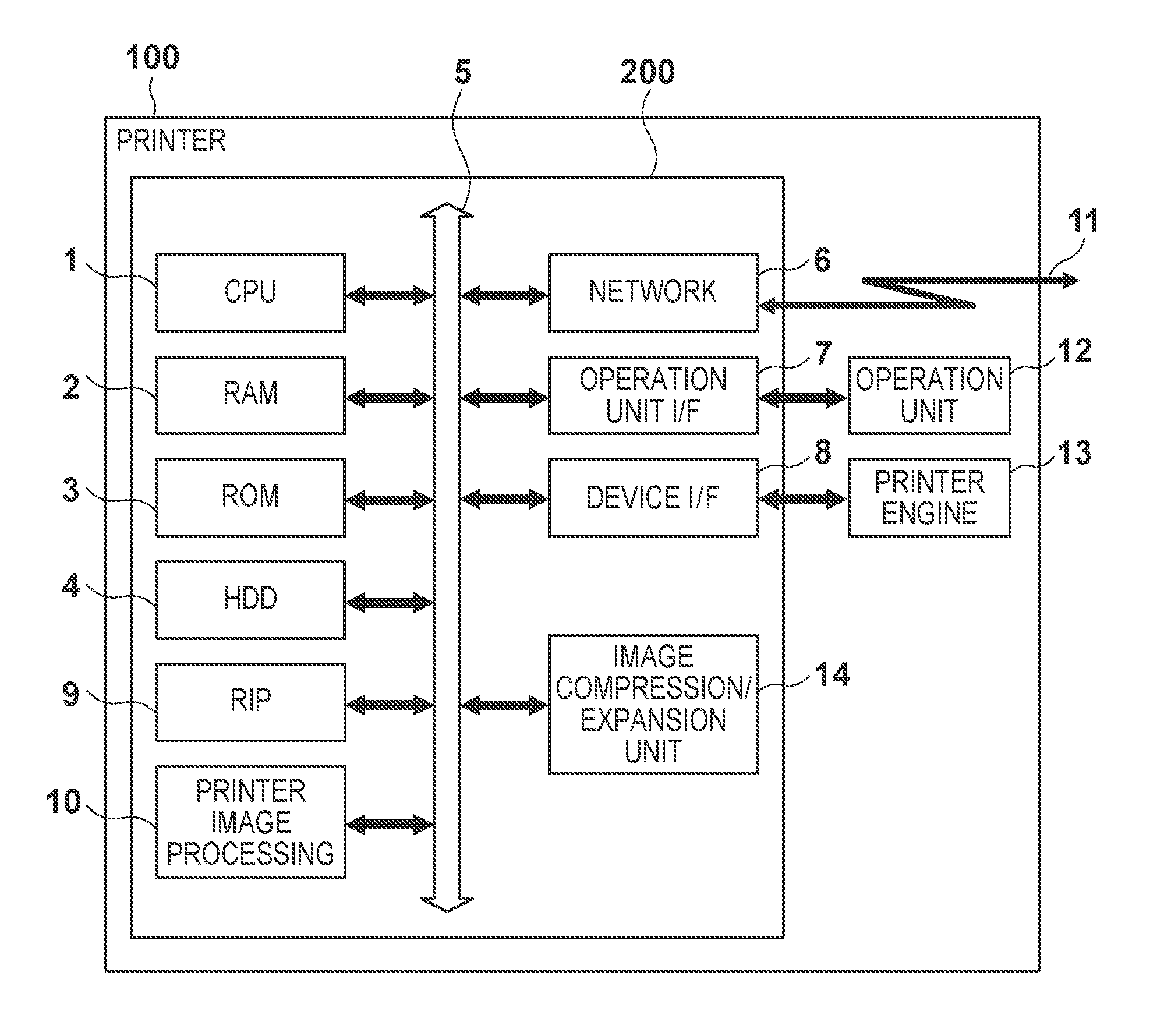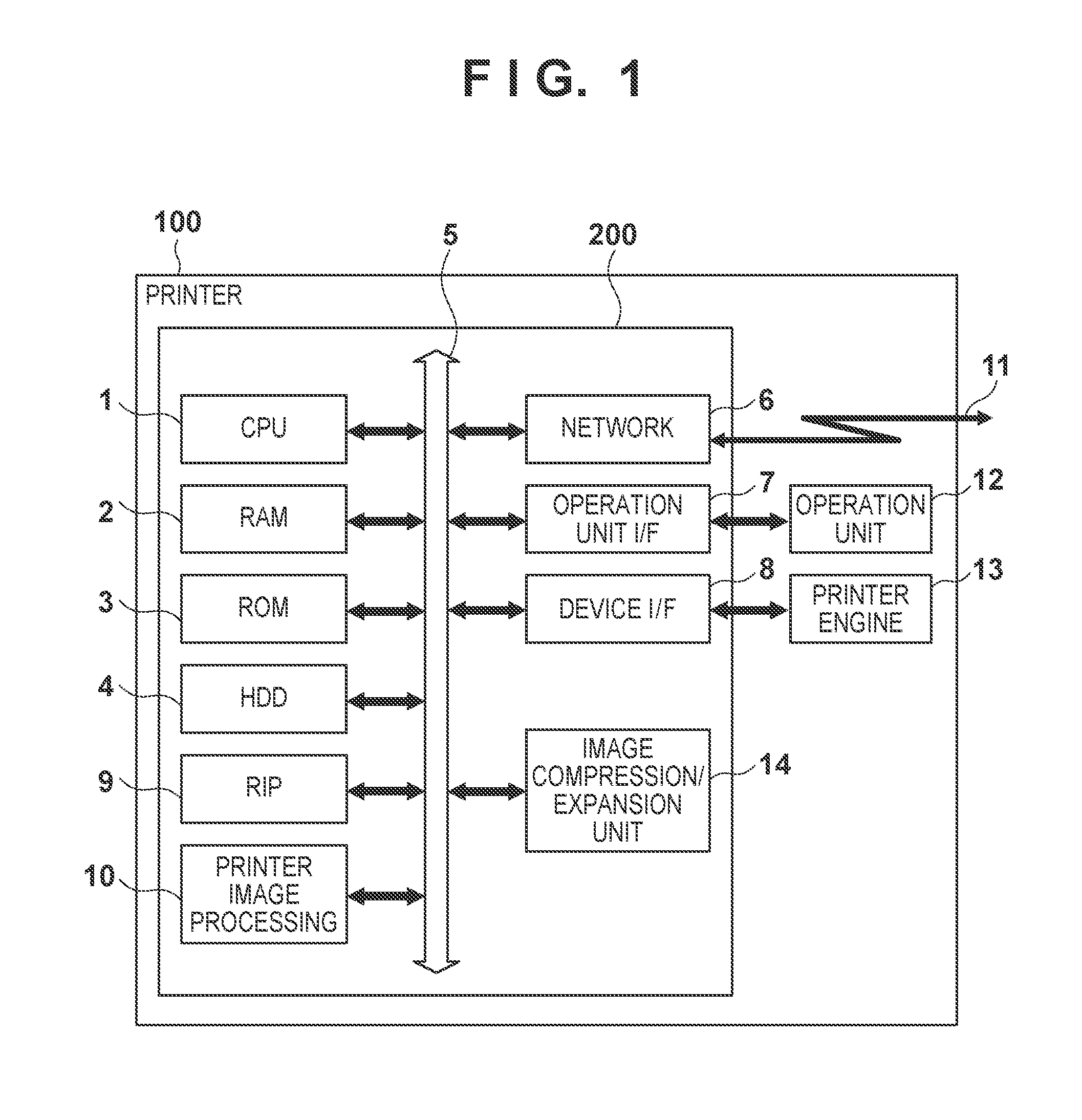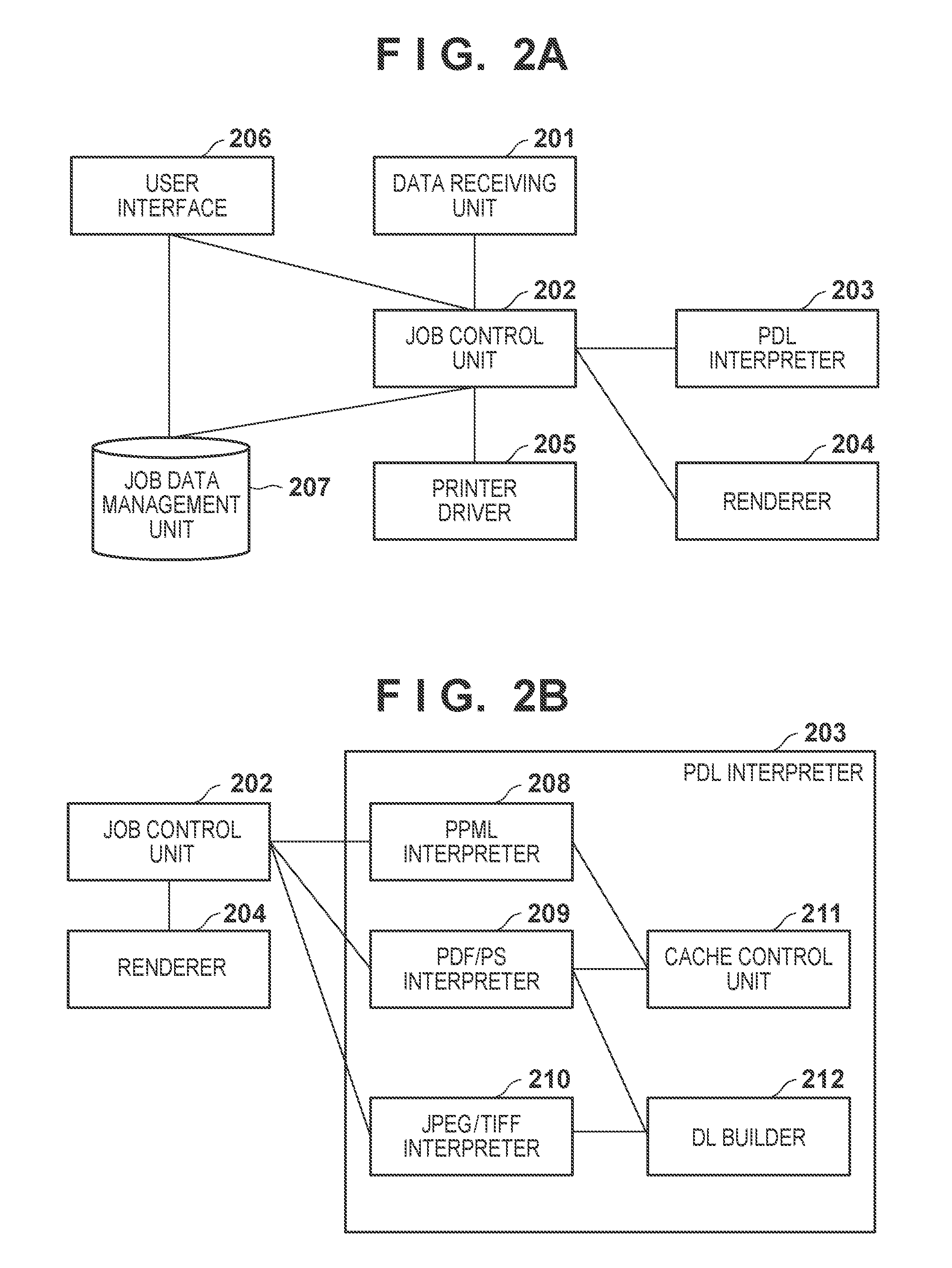Print data processing apparatus and print data processing method
- Summary
- Abstract
- Description
- Claims
- Application Information
AI Technical Summary
Benefits of technology
Problems solved by technology
Method used
Image
Examples
embodiment 1
[0030]Hereinafter, embodiments for executing the present invention are described using the accompanying drawings. FIG. 1 is a hardware block diagram for describing a configuration of a printer 100, which is a print data processing apparatus in which the present working example is applied. It should be noted that the present working example is described using a standalone configuration of a print data processing apparatus, but a configuration is also possible in which large amounts of processing are separated and executed by a host computer that is connected via a network.
[0031]In FIG. 1, numeral 200 represents a controller unit that controls the input and output of image signals and device information. A CPU 1 reads out programs that are stored in a ROM 3 or a HDD 4 to a RAM 2 and executes these programs. Further still, the CPU 1 performs general control for each device connected via a system bus 5. The RAM 2 functions as a main memory of the CPU 1 and a work memory. A boot program ...
embodiment 2
[0049]In the present embodiment, description is given of a method different from embodiment 1 for shortening resource processing times. Description is given for the present working example also using an example of a case where the PS resource file processing time is to be shortened with respect to print data described in PPML in a same manner as embodiment 1. FIG. 5 shows an outline of a method for shortening resource processing times to be described in the present embodiment. Here, S1201 and S1202 are identical to S1101 and S1102 respectively in FIG. 4, and therefore description thereof is omitted.
[0050]At S1202, in a case where it has been determined that there are multiple print objects present using an identical resource file, the procedure proceeds to S1203. Specifically, S1202 is achieved by using the file names of the resource files and determining the presence / absence of identical file names. Here, as in embodiment 1, description is given using an example of a case where the...
embodiment 3
[0055]In the present working example, description is given of a method in which the methods for shortening resource processing times described in embodiments 1 and 2 are used in combination.
[0056]The method for shortening resource processing described in embodiment 1 has the advantage that the resource file processing itself can be omitted, but has the limitation that it can not be applied in cases where the objects cannot be consolidated. On the other hand, the process of shortening resource processing described in embodiment 2 has the advantage that it is applicable to an arbitrary object, but has the limitation that the time used in the process of extracting individual resources cannot be omitted. Accordingly, rather than using only one of the measures described in either embodiment 1 or 2, there are cases where an even higher effect can be expected by using these measures in combination.
[0057]In the present embodiment, description is given using the flowchart in FIG. 6 of an exa...
PUM
 Login to View More
Login to View More Abstract
Description
Claims
Application Information
 Login to View More
Login to View More - R&D
- Intellectual Property
- Life Sciences
- Materials
- Tech Scout
- Unparalleled Data Quality
- Higher Quality Content
- 60% Fewer Hallucinations
Browse by: Latest US Patents, China's latest patents, Technical Efficacy Thesaurus, Application Domain, Technology Topic, Popular Technical Reports.
© 2025 PatSnap. All rights reserved.Legal|Privacy policy|Modern Slavery Act Transparency Statement|Sitemap|About US| Contact US: help@patsnap.com



